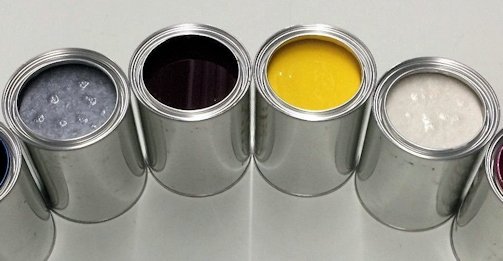Vehicle paint drying process

The full drying process is not the same for all paints; broadly, paints can be classified into four groups:
1. Paints generally known as lacquers, drying occurs purely as a result of solvent evaporation and there is no chemical change involved. The characteristics of the group are of a high solvent content and rapid initial drying.
The group includes:
- Cellulose and acrylic-based car repair paints.
- Cellulose-based quick-drying primers
- primer—fillers, sealers
- Cellulose-based stoppers.
2. This group contains oil- and synthetic-resin based paints. In these, initial drying occurs by evaporation of solvent, but final hardening is due to chemical changes in the paint vehicle caused by the uptake of oxygen. With this type of material there is always a critical period during which wrinkling or lifting will occur on recoating, owing to the chemical changes which occur in the vehicle when this is gradually becoming less soluble in its own solvent. The group is characterized by a high
solids content, and a slower surface dry time than with lacquers.
It includes:
- Synthetic quick-drying spraying finishes.
- Synthetic coach enamels.
- Oil and synthetic-resin-based primers
- primer—surfacers stoppers.
3. Paints in the third group will not air dry but to fully harden need a baking period at a temperature of 80 °c upwards. Solvent evaporation causes initial drying to take place. But final through hardening is dependent upon a chemical reaction between two components in the paint vehicle, and this reaction can only take place in a time period of about 30 minutes after the stoving temperature has reached 80 °C. This group is characterized by a low solvent content and the need to install expensive stoving equipment.
- It includes low-bake enamels.
4. The fourth group consists of two-pack paints. these materials now not often used will not harden until both component parts have been mixed together when a chemical reaction takes place causing the paint vehicle to harden. One disadvantage is the limited pot life or working time once the two component parts have been mixed. The group is characterized by a low solvent or even solvent-free content and a high vehicle content.
- Typical materials are:
- Two-pack polyurethane finishes.
- Two-pack epoxy primers and finishes.
- Polyester stoppers and spraying fillers with peroxide catalysts.



